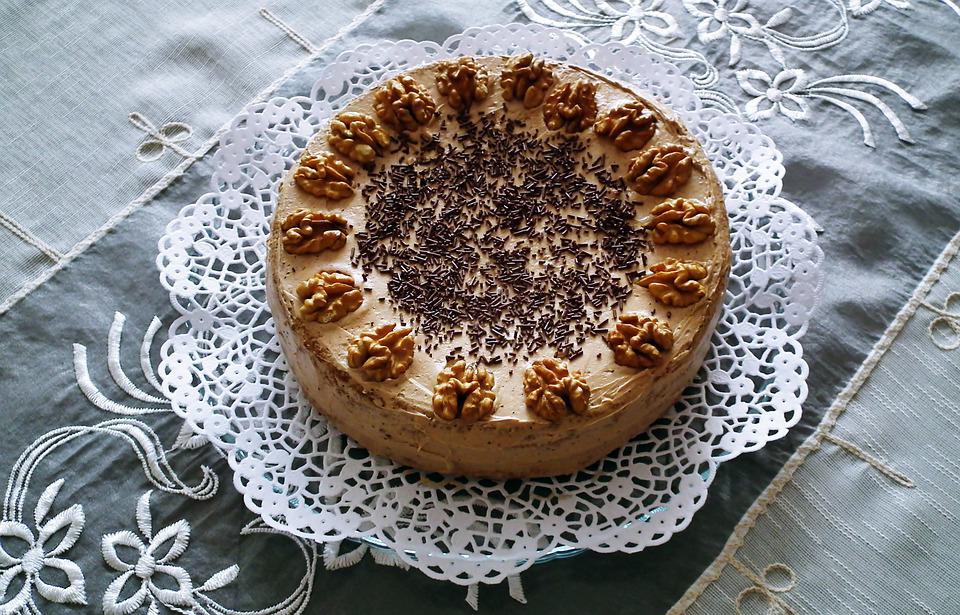
The history of cake goes back to the past. The primary cakes and cake delivery were different from what we eat today. They were more bread-like & sweetened with honey. Nuts & dried fruits were added often. Consistent with the food historians, the traditional Egyptians were the primary culture to point out evidence of advanced baking skills. The Oxford English Dictionary traces the English word cake back to the thirteen century. It’s a derivation of ‘kaka’, an Old Norse word. Medieval European bakers made fruitcakes & gingerbread often. These foods could last for several months. We discuss related to Background of Cakes in detail.
History Of Cake
As per food historians, the precursors of recent cakes were first baked in Europe sometime within the mid-17th century. This is often due first & foremost to advances in technology (reliable oven manufacturers/availability of food molds) & ingredient availability (refined sugar). At that point cake hoops–round molds to shape cakes that were placed on flat baking trays were popular. They might be made from wood, paper, or metal. Some were adjustable. Cake pans were sometimes used.
Recipe of Cake
The first icing was a boiled composition of the best available egg whites, sugar, and sometimes flavorings. This icing was simply poured on the cake. Then, the cake was returned to the oven for a short time. When removed the icing cooled quickly to make a tough & glossy [ice-like] covering. Many cakes made at this point still contained dried fruits (raisins, currants, citrons). It had not been until the center of the 19th century that cake as we all know it today (created with extra refined white flour & leaven rather than yeast) arrived on the scene.
A brief history of leaven. Cassell’s New Universal cookbook [London, 1894] has a recipe for a cake, American (p. 1031). Butter-cream frostings (using cream, confectioners sugar, flavorings, & butter) began replacing traditional boiled icings within the first few 20th century decades. In France, Antonin Careme [from 1784 to 1833] is taken into account as THE premier historic chef of the fashionable pastry or cake world. You’ll find references to him in history books of French cuisine.
Difference between A Cake, A Torte, and A Gateau
‘Gateaux’ may be a French word for cake. It generally denotes things made with exquisite ingredients which are consumed best soon after the confection is formed (gateaux des ROI). Cakes can last for much longer, some even improve with age (fruit cake). Torte is the German word for online cake delivery idea with similar properties. When tortes are multi-layered & fancifully decorated they’re closer to gateaux apart from the fact they will last quite nicely for multiple days.
Beginning Of Where It Started
Cakes are the foremost popular sweet offering or dessert within the entire world after ice cream. We are sure it brings back memories once you hear “cake”. It may be a childhood bakery, a celebration, or a really fond memory of a bite. In the past cakes started as a sort of sweetbread, because the ingredients that went into cakes did not differ much. Cakes were just richer bread with butter, raisins, eggs, nuts, & honey. A living example of an equivalent would be an everlasting – Baba au Rhum. In Ancient Greek history, there are references to cakes as “plakous”.
Offerings of the Gods
Romans also want to make a cake known as “placenta” (pronounced as “pla-ken-ta”) as an offering to their god. History says that Egyptians want to bury fruitcakes with their pharaohs as food for his or her journey to the afterlife. As per Oxford Dictionary, the English word cake is often traced back as far back as the 13th century because it is conceived from a Norse word – “kaka”.
It was within the mid-seventeenth century that cakes with cake icing were first developed. Sugar-boiled egg whites were utilized as icing. Because the technology advanced & sugar became widely available within the late seventeenth century, cakes were seen with boiled icing, the cakes’ bodies still had raisins & nuts. Sponge cakes were first developed during the Renaissance in Spain. But they were usually crispy, thin, and dense like a cracker than spongy & light.
This was the primary time that cakes were tried to be baked without yeast. Eggs & egg whites were eventually used as a mechanical raising agent to form sponges. By the late eighteenth-century leaven was invented and it changed the sport of cakes forever. It had been yeast that wasn’t to raise cakes before leaven came into existence. Henceforth there wasn’t much to differentiate cakes from bread.
Cakes We Know Today
The cakes as we all know them today began their history within the nineteenth century in Britain, sponges turned to be more refined with the utilization of refined fat, flour, and leaven. Within the 1900s icings became even more elaborate, boiled icings were excavated and buttercream or topping icing came into play. A spread of sponges was made up of chiffon to genoise the devil or angel.
Cake traveled the planet and shortly was widely known in other parts of the planet. Germans called them gateaux, Austrians called them torte and therefore the French started the trend of entremets. all of them differed a touch from each other. But they were genetically equivalent. Cakes became ornamental with lavish decorations & icings and have become crucial to commemorate celebrations. You can nowadays order cake online Mumbai for any occasion from online bakery shops from your place anytime.
Cake premixes invented in the 1930s were a revolutionary milestone within the baking industry that happened within the USA during the good depression after the primary war. It became common and there was an enormous surge in the demand for cake mixes after war Two. So far people were buying cakes. But this allowed everyone to undertake their hands-on baking. It had been an enormous success and therefore the first idea was patented as well.